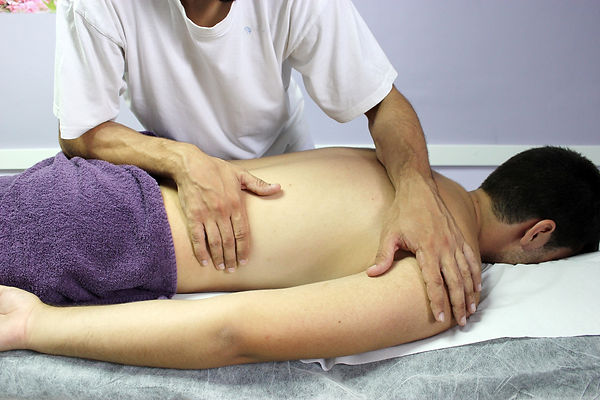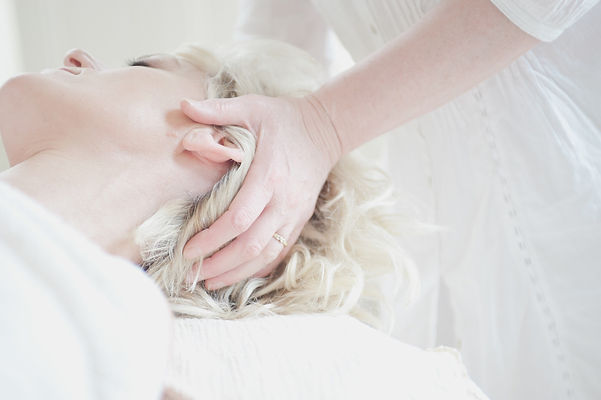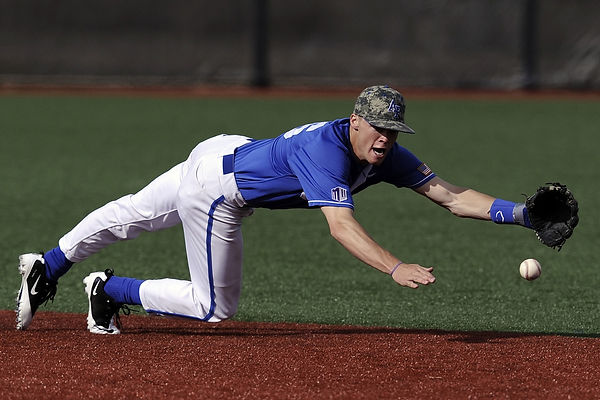ThePainman & ColeidoScopes

Massage Therapy
If you have come to this page looking for a solution to your aches and pains, please take time to read the Posture Alignment page. This will show you exactly why you are experiencing pain right now and how best to fix it.
As much as I love giving massage, it is my professional duty to educate you that massage treats the symptoms rather than the cause. Once you know and understand this, you can then make an informed choice as to what route you would like to take. Of course, you may not be in pain and are simply a fan of massage... if that's you, please read on by selecting a massage below!

DEEP TISSUE MASSAGE
Deep Tissue Massage is a massage technique that focuses on the deeper layers of muscle tissue. It aims to release the chronic patterns of tension in the body through slow strokes and deep finger pressure on the contracted areas, either following or going across the fiber's of the muscles, tendons and fascia. Deep tissue massage is used to release chronic muscle tension through slower strokes and more direct deep pressure or friction applied across the grain of the muscles not with the grain. Deep tissue massage helps to break up and eliminate scar tissue.
Why get a Deep Tissue Massage? It feels good and it is beneficial to your health. When muscles are stressed, they block oxygen and nutrients, leading to inflammation that builds up toxins in the muscle tissue. A deep-tissue massage helps loosen muscle tissues, release toxins from muscles and get blood and oxygen circulating properly. Because many toxins are released, it's important to drink plenty of water after a deep-tissue session to help eliminate these toxins from the body.

NEUROMUSCULAR MASSAGE
The most effective type of massage therapy for lower back pain is neuromuscular therapy. Neuromuscular therapy is also called trigger point myotherapy. The American Academy of Pain Management recognizes this form of massage therapy as an effective treatment for back pain caused by soft tissue injury (such as a muscle strain).
Neuromuscular therapy consists of alternating levels of concentrated pressure on the areas of muscle spasm. The massage therapy pressure is usually applied with the fingers, knuckles, or elbow. Once applied to a muscle spasm, the pressure should not vary for ten to thirty seconds.

ORTHOPEDIC MASSAGE
Orthopedic massage is a specialized form of manual treatment that combines techniques from many therapeutic traditions. These techniques include: specific positional concepts, the facial release of connective tissue massage, transverse friction massage and muscle energy techniques.
The goal of Orthopedic Massage is to dissolve adhesions; normalize the position of the soft tissue and release its torsion; lengthen the connective tissue; hydrate the joints; facilitate normal neurological function by muscle energy techniques; and release entrapment of the peripheral nerves. Orthopedic Massage is an extremely efficient and effective method of therapy.
Orthopedic massage is an exciting new approach to the treatment of numerous pain and injury conditions previously treated only with conventional methods. Providing a comprehensive system of treatment that incorporates a wide variety of massage treatment techniques, orthopedic massage enables the practitioner to choose the most effective treatment for a particular condition. The orthopedic massage practitioner is knowledgeable and skilled in their understanding of pain and injury conditions and massage treatment techniques. This combination of expertise provides for the most effective treatment of soft tissue pain and injury conditions using massage therapy.

SPORTS MASSAGE
Sports Massage is a special form of massage and is typically used before, during, and after athletic events. The purpose of the massage is to prepare the athlete for peak performance, to drain away fatigue, to relieve swelling, to reduce muscle tension, to promote flexibility and to prevent injuries.
Purpose of Sports Massage? The main purpose of sports massage therapy is to help alleviate the stress and tension which builds up in the body’s soft tissues during physical activity. Where minor injuries and lesions occur, due to overexertion and/or overuse, massage can break them down quickly and effectively. The massage will help prepare the athlete for peak performance, to drain away fatigue, to relieve swelling, to reduce muscle tension, to promote flexibility and to prevent injuries. Sports massage can help prevent those niggling injuries that so often get in the way of performance and achievement, whether a person is an athlete or a once a week jogger.